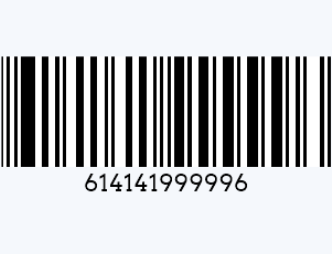In today's digital world, QR codes and barcodes are integral to various industries, from retail to healthcare.
Understanding QR code vs barcode, including their advantages, disadvantages, and applications, can help businesses make informed decisions on which technology best suits their needs.
Recognizing the distinctions between QR vs barcode can enhance operational efficiency and improve overall workflow.
What is a QR Code?
A QR (Quick Response) code is a two-dimensional barcode that can store a large amount of data. Unlike traditional barcodes, QR codes can be read by smartphones and various scanning devices, making them versatile for many applications.

Advantages and Disadvantages of QR Codes
Advantages:
High Data Capacity: QR codes can store significantly more data than barcodes, including URLs, text, and multimedia.
Easy to Scan: They can be scanned quickly and easily using smartphones.
Error Correction: QR codes have built-in error correction, allowing them to be read even if partially damaged.
Disadvantages:
Aesthetics: QR codes can be visually unappealing and may detract from product packaging design.
Size: QR codes can become large if too much data is encoded, which can be impractical for smaller products.
Compatibility: Not all scanners can read QR codes, especially older barcode scanners.
Tips for Using QR Codes
Optimize Size: Ensure the QR code is large enough to be scanned easily but not so large that it disrupts design elements.
Test Scanning: Test the QR code with multiple devices to ensure it scans correctly.
Provide Context: Include a brief description or call to action near the QR code to inform users what they can expect when scanning.
QR Code's Application
Marketing: QR codes are used in marketing campaigns to direct consumers to websites, promotional offers, and social media pages, enhancing engagement and interactivity.
Event Management: QR codes on tickets streamline entry processes, reducing wait times and improving the attendee experience.
Education: In education, QR codes link to supplementary resources, videos, and interactive content, enriching the learning experience.
What is a Barcode?
A barcode is a visual representation of data, typically consisting of a series of parallel lines of varying widths.
These lines encode information that can be read by barcode scanners. Barcodes are widely used in retail, logistics, and inventory management to track products and manage data efficiently.

Advantages and Disadvantages of Barcodes
Advantages:
Efficiency: Barcodes allow for quick and accurate data entry, reducing human error.
Cost-effective: Implementing barcode systems is relatively inexpensive compared to other data management solutions.
Versatility: Barcodes can be used in various industries for inventory control, asset tracking, and more.
Disadvantages:
Limited Data Capacity: Barcodes can only hold a small amount of data.
Damage Sensitivity: If a barcode is damaged, it can become unreadable.
Line-of-Sight Requirement: Barcode scanners require a direct line of sight to read the code.
Barcode's Application
Retail: Barcodes are crucial for product identification, pricing, and inventory management. They streamline the checkout process and ensure accurate stock levels.
Healthcare: Barcodes help in tracking patient information, medication administration, and equipment management, enhancing patient safety and operational efficiency.
Logistics: In logistics, barcodes are used for tracking shipments, managing warehouse inventory, and reducing errors in the supply chain.
What is the Difference Between QR Codes and Barcodes?
QR Code vs Barcode:
The primary difference between QR codes and barcodes lies in their data capacity and structure.
Barcodes are one-dimensional and store limited information, usually numeric data.
QR codes are two-dimensional and can hold extensive data, including text, URLs, and multimedia.
QR Code vs Barcode: How to Choose?
When deciding between QR codes and barcodes, consider the following factors:
● Data Needs: Use QR codes if you need to store more complex data. Barcodes are suitable for simpler, numerical data.
● Scanning Environment: Barcodes are ideal for environments where high-speed scanning is required. QR codes are better for consumer-facing applications where mobile scanning is common.
● Space and Design: Barcodes are more space-efficient for small items. QR codes require more space but offer greater versatility in data encoding.
FAQ
1. Why did QR codes replace barcodes?
QR codes offer greater data capacity, error correction, and ease of use with mobile devices, making them more versatile for modern applications.
2. Can you use a QR code as a barcode?
Yes, QR codes can be used similarly to barcodes but offer the advantage of encoding more detailed information.
In summary, both QR codes and barcodes have unique advantages and applications. When considering barcode vs QR code, barcodes are efficient for inventory management and quick data entry, while QR codes excel in marketing and consumer interaction due to their high data capacity and error correction features.
For businesses seeking to implement these technologies, understanding the differences in the QR code vs barcode debate is crucial. Consider your specific needs to choose the right solution.
Ready to start using a QR code generator or barcode generator?
Try generating them with our generator to streamline your processes and enhance your operational efficiency.




